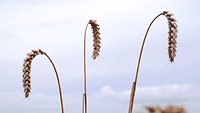Pesticide Chlormequat is Being Detected More Frequently in Humans, EPA Poised to Allow its Use on Food Crops

Image credit: Stephen Radford via Unsplash
In a new study, the Environmental Working Group (EWG) has detected the pesticide chlormequat in four out of five people tested. Although chlormequat is not allowed for use on crops grown in the U.S., the U.S. Environmental Protection Agency (EPA) proposed a rule in 2023 that would allow the pesticide to be applied to barley, oat, triticale, and wheat crops.
Research on the human health harms posed by chlormequat is limited, but some animal studies have shown the chemical to damage the reproductive system, disrupt fetal growth, and alter key metabolic processes, which raises concerns about how the pesticide might affect humans.
EWG’s study, which is the first of its kind, collected urine samples between 2017 and 2023 from 96 people in the U.S., and tested the samples for chlormequat. The chemical’s presence was detected in a greater number of people and in higher concentrations during 2023 than in previous years, possibly indicating an increasing consumer exposure to the pesticide. Specifically, the presence of chlormequat was detected in samples at frequencies of 69 percent, 74 percent, and 90 percent for samples collected in 2017, 2018–2022, and 2023, respectively.
EWG also tested oat- and wheat-based foods collected from U.S. grocery stores during summer 2022 and spring 2023. Chlormequat was detected in a majority of the nonorganic oat-based samples (92 percent).
At present, EPA only allows the domestic use of chlormequat on ornamental crops. However, in an April 2023 proposal, the agency announced its intent to register the first food uses of the pesticide, in a response to an application submitted by chlormequat manufacturer Taminco. If finalized, the rule would enable chlormequat to be applied to barley, oat, triticale, and wheat. Before registering these uses, however, EPA must establish maximum tolerances for the chemical in these crops. EPA’s proposed rule also includes mitigation measures to address potential harm to the health of field workers and wildlife.
EPA has allowed chlormequat on imported oats and other foods since 2018, and increased the maximum tolerable level for the pesticide in 2020.
Given the toxicological concerns associated with chlormequat exposure in animal studies, and increasing exposure among the U.S. population, EWG calls for monitoring of the chemical in foods and people, as well as epidemiological and animal studies on the safety of the pesticide.
Looking for a reprint of this article?
From high-res PDFs to custom plaques, order your copy today!









